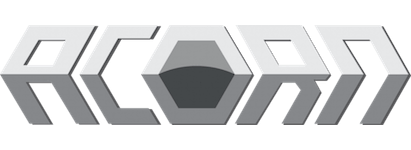
Excess inventory, or overstock, presents a significant challenge in the manufacturing sector, particularly for businesses that produce highly complex products, like most OEMs. Achieving a balance between supply capabilities and customer demand is crucial. Various factors contribute to overstock, including inaccurate demand forecasts, sub-par inventory management, unreliable suppliers, evolving client preferences, product lifecycle stages, economic fluctuations, quality issues, poor inter-departmental communication, and excessive ordering.
We need to get the balance right based on our own unique company demands. Accumulating surplus inventory escalates storage, insurance, and utility costs, effectively freezing capital that could otherwise generate returns. It also heightens the risk of inventory obsolescence due to damage, expiration, or redundancy following design or technological advancements.
Conversely, reducing inventory to the bare minimum introduces risks such as increased dependency on suppliers, potentially higher costs due to smaller orders, and the challenge of meeting unexpected spikes in demand. We go into far more detail on this subject in our previous article: Fight excess inventory: causes and consequences of overstocking, but here our topic focus is on the strategies to overcome and master this problem.
To tackle this issue it is imperative to find a strategic equilibrium that mitigates the drawbacks of both excess and minimal inventory levels. Addressing the underlying causes of overstock through sophisticated data analytics, efficient supply chain tracking, robust supplier partnerships, vigilant monitoring of market trends, and synchronised planning across teams sounds easy on paper.
In practice? Not so much.
But by resolving issues related to overstock, businesses can not only reduce operational costs but also enhance their adaptability and competitiveness in a dynamic market environment.
Approaches to eliminate excess inventory
These strategies focus underscore the need for expert management of components and inventory — they highlight the competitive edge and advantage of agile, collaborative supply chain management coupled with a flexible, efficient product manufacturing operation.
tl;dr — summary of strategies — Use demand predictions and data analysis — Apply a Just-In-Time system — Partner closely with suppliers — Make production adaptable — Maintain real-time stock visibility — Align inventory levels across the whole supply chain — Establish reordering guidelines — Conduct regular inventory audits — Improve new product launches — Use data for smart purchases
Use demand predictions and data analysis
Carefully forecast how much of each part and SKU is needed by looking at past trends, and where the market is headed.
Extracting these and other insights from proprietary and wider market data is hugely important for planning production in companies that make their own advanced products.
Looking closely at past sales numbers and market reports in a smart way helps OEM companies get a clear picture of what B2B customers will want in the future in their specific niche. They can analyse the historical data only they have access to, along with wider trends, to make very accurate predictions of future demands on item production and delivery — including what this means for supply and production line availability for all the separate parts (which are usually myriad, and a mix unique to each manufacturer) that go into assembly.
Aligning production schedules based on these demand forecasts helps OEMs efficiently manage inventory. Taking seasonal changes and shifting trends into account further improves management of parts and materials on-hand. This approach emphasises reliability of supply to meet demand effectively while optimising inventory level.
Apply a Just-In-Time system
Following the principles of only ordering parts as they'll be used in upcoming product assembly schedules helps avoid stockpiling components with associated avoidable costs.
Just-In-Time (JIT) inventory management is the cornerstone of lean manufacturing. It is a practical concept that aims to reduce inventory through accurately planning materials arrival and components availability precisely when needed for production line use. The approach prevents working capital being tied up in unproductive inventory.
It requires meticulous coordination with suppliers along with tight production timetables. By procuring smaller quantities of components more frequently, manufacturers can streamline production, reduce storage expenses, and improve cash flow, while ensuring component availability for uninterrupted assembly operations. Working with an expert master supplier and logistics expert can accelerate progress in this area, as experience and network oversight are essential.
Partner closely with suppliers
Coordinating tightly with the companies that supply parts — sharing production schedules and updates on changing needs — is key for product makers to sync up procurement and incoming parts deliveries.
Fostering close partnerships with suppliers is important for manufacturers who require high quality materials and product. By building open lines of honest communication with suppliers, OEMs can share information like upcoming production schedules, predictions for future demand, and changes in customer needs. This allows suppliers to adjust their schedules and prioritise delivery as required, making adjustments to their own schedules to accommodate the OEM.
Collaborating closely with suppliers gives OEMs access to shared knowledge and expertise. Together they can spot chances to improve processes, lower costs and optimise lead times. Supplier partnerships don't just help materials and parts flow smoothly, they can also input and drive efficiency in product design and assembly. Building long-lasting trusted relationships across the supply chain improves overall efficiency for everyone involved and is a 'win-win'.
Make production adaptable
Using technology and automation allows flexibility to easily adjust assembly volumes and reorder parts based on actual demand signals.
Enabling flexible production processes is a critical strategy for OEMs to respond effectively to fluctuations in customer demand. It requires deep thought and reengineering of processes in collaboration with key supply chain partners (we have a service tailored for this). By leveraging advanced manufacturing technologies and automation, OEMs can achieve greater agility in adjusting production volumes, schedules, and component orders. This needs to be integrated up-stream in the supply chain as well as down-stream from assembly and production.
The promise of automated systems is one of recalibrating production lines, adjusting machine assembly settings, and optimising resource allocation based on real-time demand signals. A flexible and agile supply chain is paramount to achieve this. Compatible technologies and complementary processes are necessary.
Maintain real-time stock visibility
Implementing inventory tracking systems provides live views of where all parts are across all facilities for optimising stock levels.
Self-managed inventory and storage can often lack the attention, detail and investment required to provide accurate visibility and efficient, trackable storage. Access to reliable up-to-the-minute inventory data allows informed choices rather than guessing about when and what to order. A professional outsourced warehousing service concentrates on this activity.
Live visibility aids retrieval of stock, enabling accurate and efficient delivery to the production line. Fine coordination between different facilities is possible. Smoother inventory transfers and reduction in risks of line-downs or stock-outs is the result. Overall efficiency and reliability of operations are significantly enhanced.
Align inventory levels across the whole supply chain
Collaboratively manage and agree on part inventory levels with both suppliers and different facilities.
Coordinating inventory strategies across the entire supply chain lets manufacturers who are making complex products achieve greater savings and smoother operations. Compliance and ESG factors are becoming more important, and this also needs closer coordination and validation within an OEM's supply network.
Transparent sharing of predictions, upcoming production demands, and inventory counts between manufacturers and suppliers is necessary for this approach to work. It empowers suppliers to align their production and deliveries. Suppliers or a trusted master supplier (see our original service of procurement and direct line feed delivery) takes responsibility for tracking and restocking levels.
Centralised or synchronised tracking systems, direct routing strategies, and safety buffers based on demand changes and lead times all help better align end-to-end delivery and demand flows.
Establish reordering guidelines
Figure out the right economic reorder amounts and timings for parts based on forecasts, lead times and typical order sizes.
Supply chain management 101: stock shortages can be minimised while also avoiding too much extra stock being stored by setting the timing and quantities accurately. Reorder points factor in criteria like desired safety cushion levels, and have definitely become more of a challenge with global transport network uncertainty and dynamically changing events currently disrupting international supply chains.
Understanding the most financially sensible order amounts while factoring in security of delivery and inventory buffers helps balance expenses involved with ordering vs storage and supply factors.
Conduct regular inventory audits
Periodically counting stock on hand helps identify and reduce unused or slow-moving leftover parts.
Regular physical inventory checks are an important practice to keep track of stock amounts accurately. By doing cycle counts regularly, manufacturers (or the inventory management partner) can double check if records match up with what's actually on the shelves. As part of auditing, expiry dates, obsolescence due to specification changes or discontinuations, or physical integrity/deterioration of components, can also be physically confirmed.
Overall, frequent inspections are a crucial manual step in confirming accurate and precise data, and will head off any potential blind spots lurking within processes or glitches in systems.
Improve new product launches
Staggered rollouts, pilot programs and flexible processes for new parts ensures supply demands are accurate before full production.
Effective new product introduction (NPI) is important for manufacturers to avoid surplus and obsolete componentry issues. Staged rollouts, phased launches, and pilot programs let companies start small, validate market interest and refine offerings before full-scale production. User feedback can be gathered. An agile supply chain that can quickly change and scale volume according to pilot demand is a golden asset.
Better product introduction, launch and staged roll-out to mass assembly aids in fine-tuning customer demand, delivery schedules, component volumes and supply strategy. It reduces risk of excess inventory and is a smarter strategy for resource usage and allocation.
Use data for smart purchases
Factor in delivery predictions, minimum orders, and lifespan expectations when buying parts to avoid obsolescence.
Data-driven buying is key for manufacturers to optimise component procurement strategy, including optimal parts supply, minimum order amounts, and lifespan projections. Especially when the market (or technology within it applicable to a manufacturer's product) moves fast, careful tracking of product lifecycles builds awareness and capability to avoid discontinuations and excess quantities of obsolete inventory.
Outdated parts equate to both financial and environmental disadvantage. Nobody enjoys write-offs, fire sales or other disposal options. Smart purchasing through data allows intelligent inventory decisions that minimise these eventualities.
Effective management of excess and obsolete inventory is a pivotal step toward increasing revenue. Developing foundational inventory proficiency, stock visibility and building to more dynamic and realtime inventory tracking, is crucial for modern OEMs to be competitive and build a fit-for-purpose modern supply chain and inventory function.
Informed purchasing decisions means over-stocking, and obsolete inventory, can be minimised. Supply chain can become more efficient and agile, and capital can be freed up. The production line benefits through efficient supply and assembly. Product becomes better and customer satisfaction increases. The company's bottom line benefits.
If you'd like to improve in this area, and benefit from expert advice and service excellence, we are here to help.
Learn more about our OEM warehousing expertise
Acorn work with OEMs (including UK critical manufacturers) to offer outsourced warehousing to effectively and efficiently manage inventory for our clients.
We specialise in providing supply chain logistics services with warehousing and inventory management expertise.










